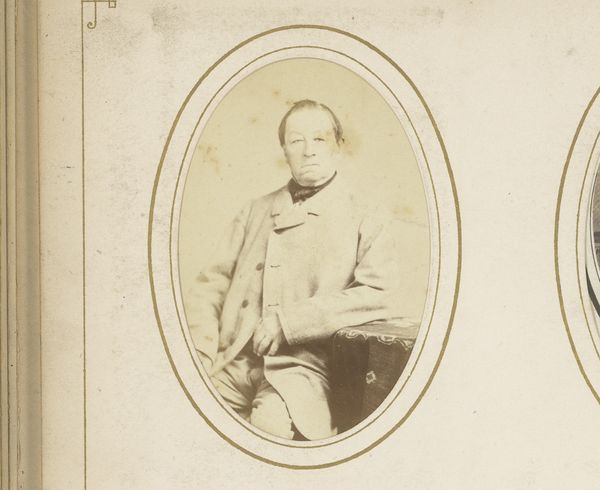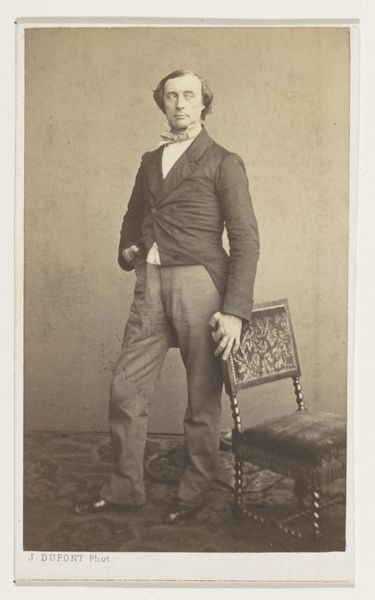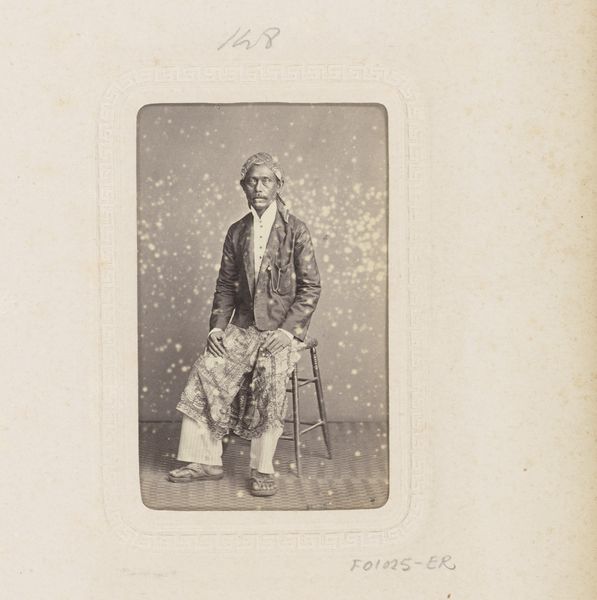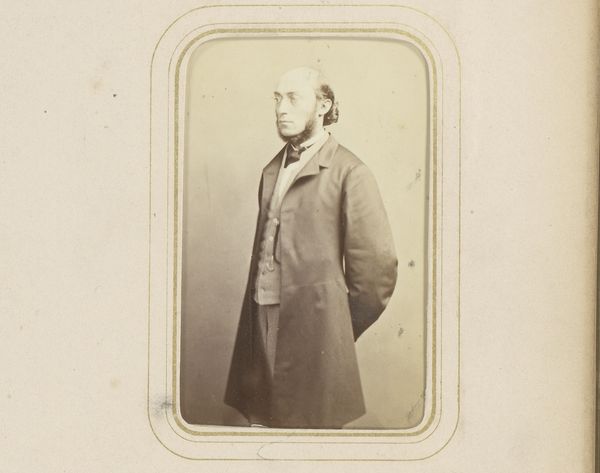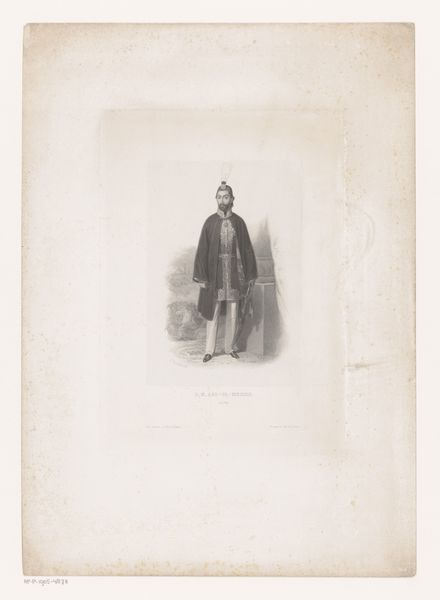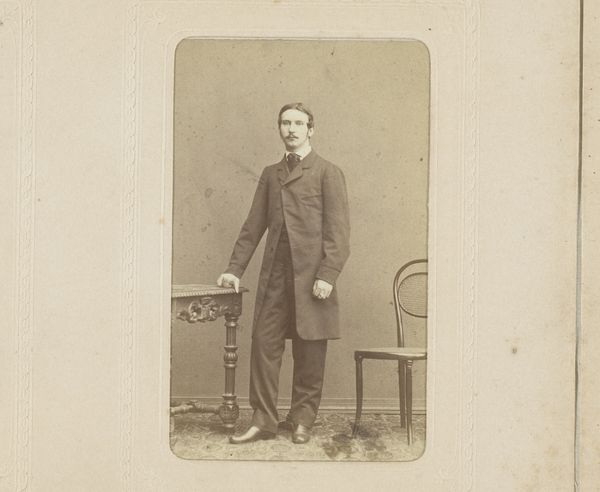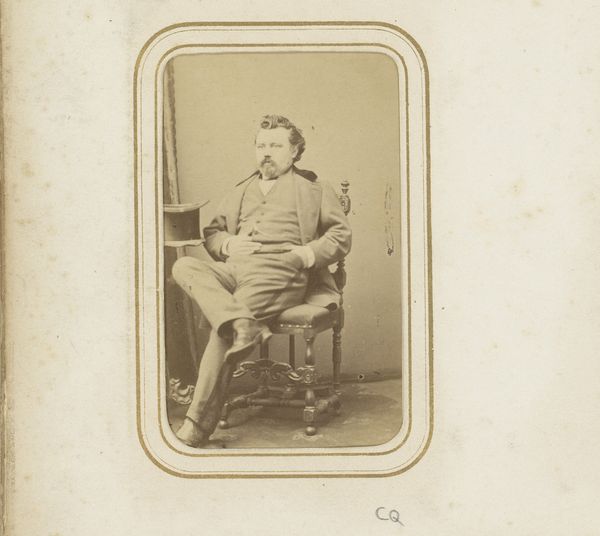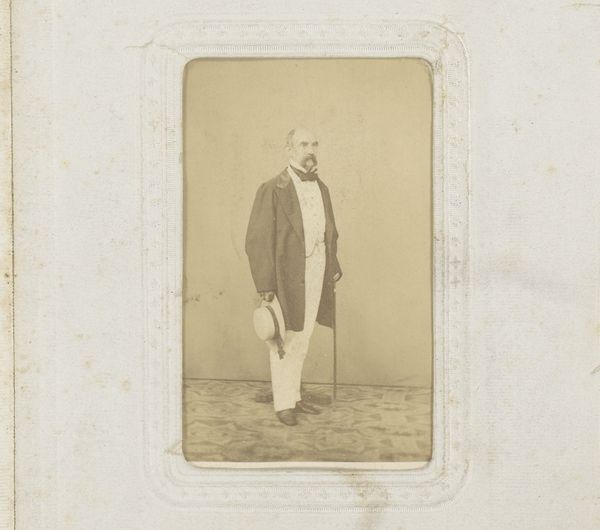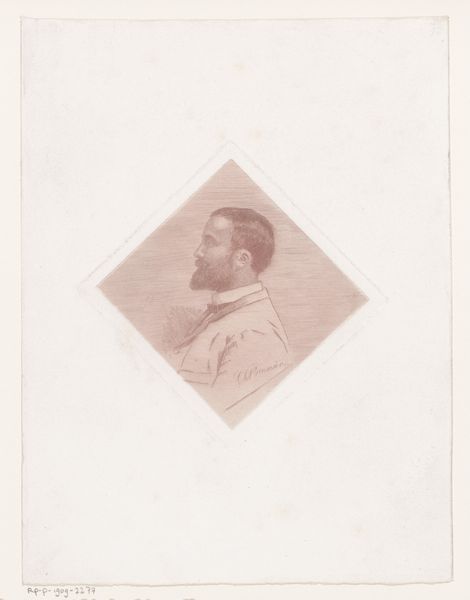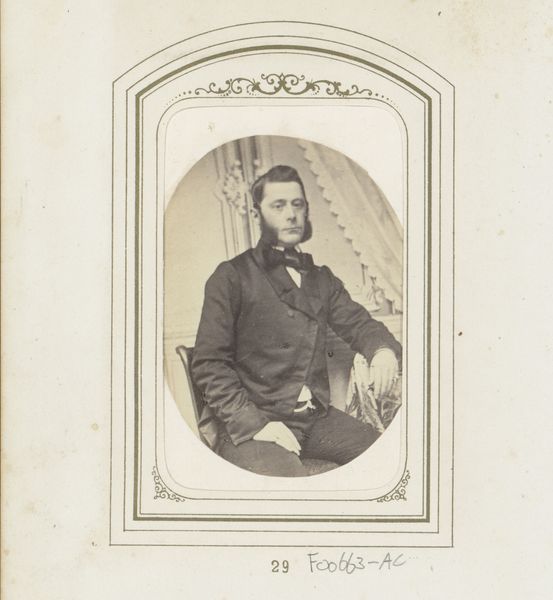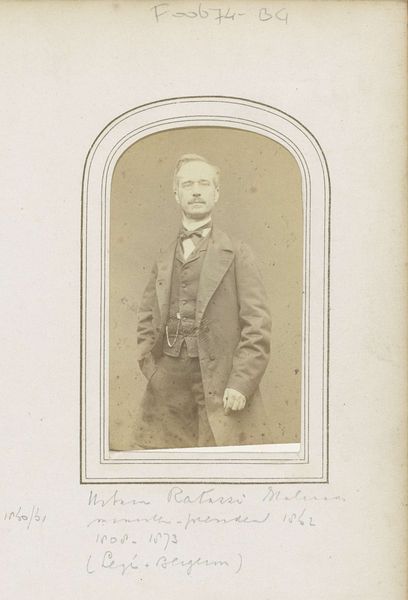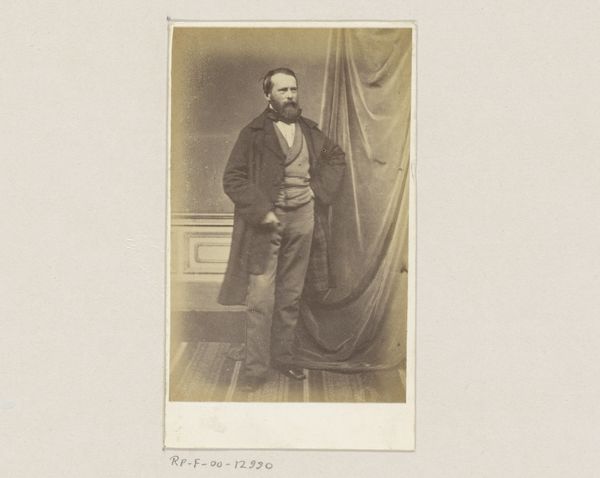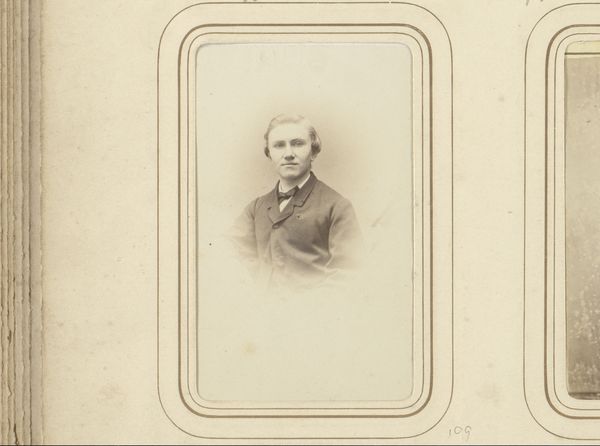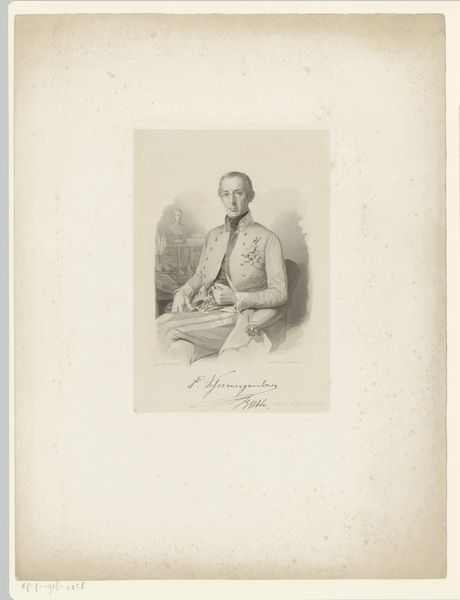
photography, gelatin-silver-print
#
portrait
#
war
#
photography
#
soldier
#
gelatin-silver-print
#
19th century
#
men
#
history-painting
#
profile
#
realism
Copyright: Public Domain
Curator: Here we have "Henry Yon," a gelatin silver print from 1865 by Reed Brockway Bontecou, now held at The Metropolitan Museum of Art. Editor: The most immediate impression is somber; the grayscale tones and the oval frame give it the air of a memorial. The sitter looks as though he is gazing reflectively into the past, but there is damage that must reflect back from whatever conflict the image has emerged. Curator: The image, while stark, meticulously captures the planes of Yon’s profile— the artist guides our gaze from the subtle nuances of the brow to the strength in his jawline through carefully considered tonality and lighting. Note how the dark beard offsets the delicate curve of his neck. Editor: It’s impossible to ignore the sitter’s injuries, though; this work presents us with a Civil War soldier and what looks like damage that resulted in his treatment. These wounds force us to consider not only his pain, his trauma, but also the broader implications of violence against marginalized bodies. How does this single portrait fit into larger narratives of power and resistance during wartime? Curator: While context is always important, consider that the pose, the composition and the lighting all serve to ennoble the sitter. Despite the damage, the image invites contemplation rather than revulsion. It uses elements such as pose, shadowing and framing that grant him respect. Editor: Perhaps the framing romanticizes the grim realities of war. By positioning Yon as an almost classical figure draped in cloth, the image risks obscuring the brutal realities endured by soldiers of the time. How does this aestheticization influence our understanding of his experience? I ask myself this same question considering representations of victims in other historical situations, say for example holocaust documentation, that utilize artistry that is easily turned toward romanticism. Curator: Well, for me it’s this tension between vulnerability and strength, carefully structured in the artistic expression that elevates the portrait beyond simple documentation. What do you make of the somewhat obscured, perhaps even secretive position that places the soldier just to the right of the composition? Editor: That’s a fascinating point; perhaps this positioning mirrors the marginalization and then ennoblement through documentation of war’s wounded. Ultimately, these nuanced perspectives offer insight into this period of strife, as well as the artist’s and sitter's individual responses to national tragedy. Curator: A photograph containing an incredible amount of detail about structure and strength in its formal construction; quite interesting indeed.
Comments
No comments
Be the first to comment and join the conversation on the ultimate creative platform.
